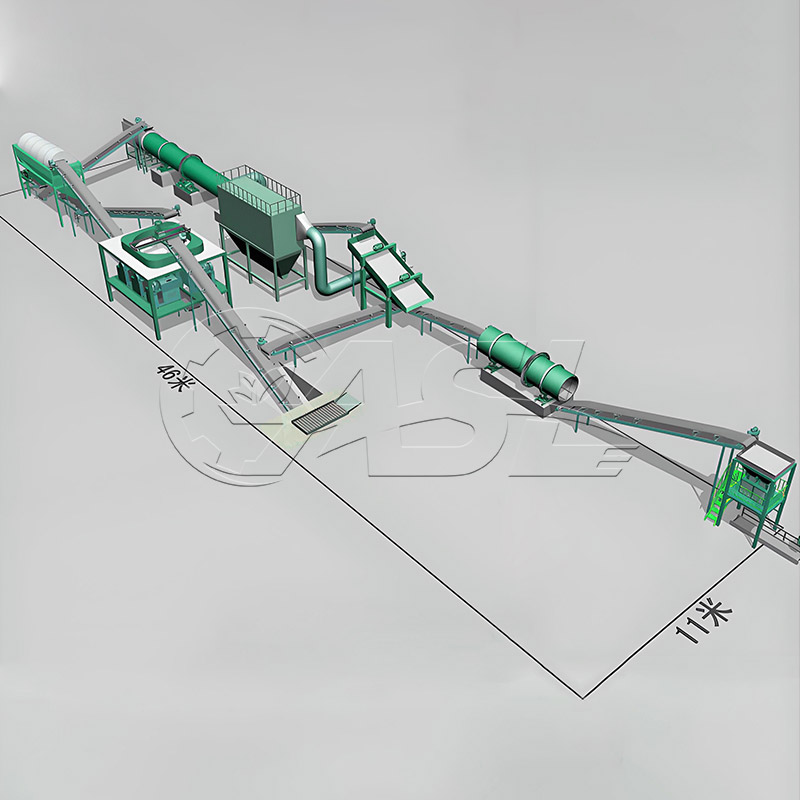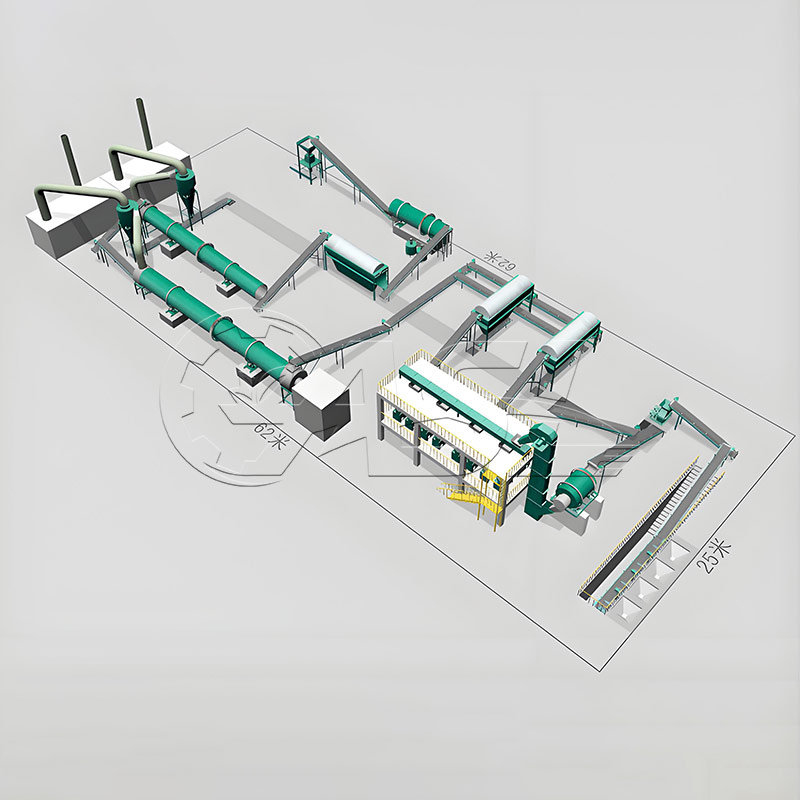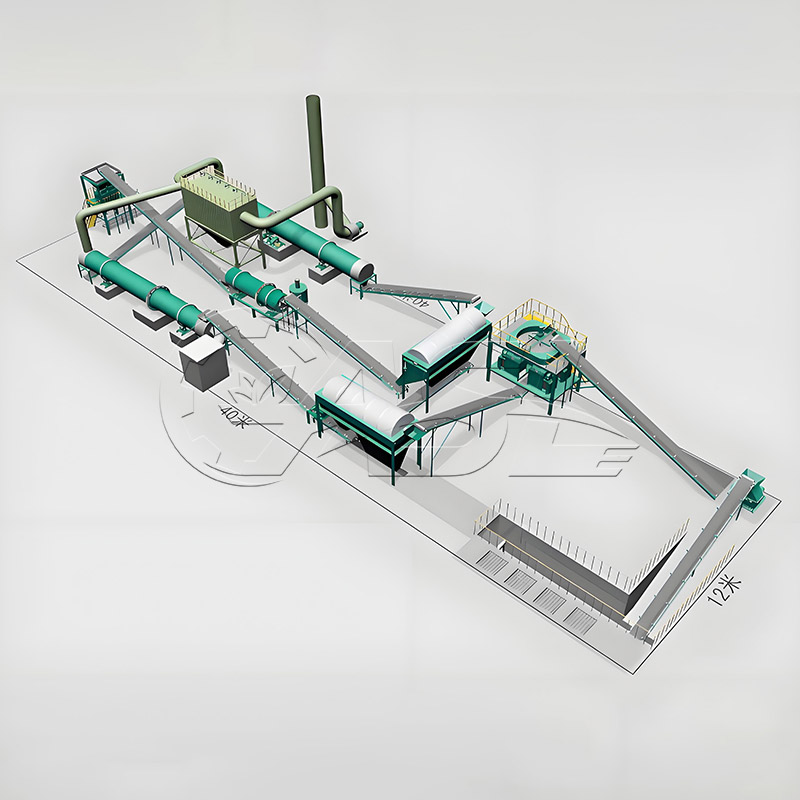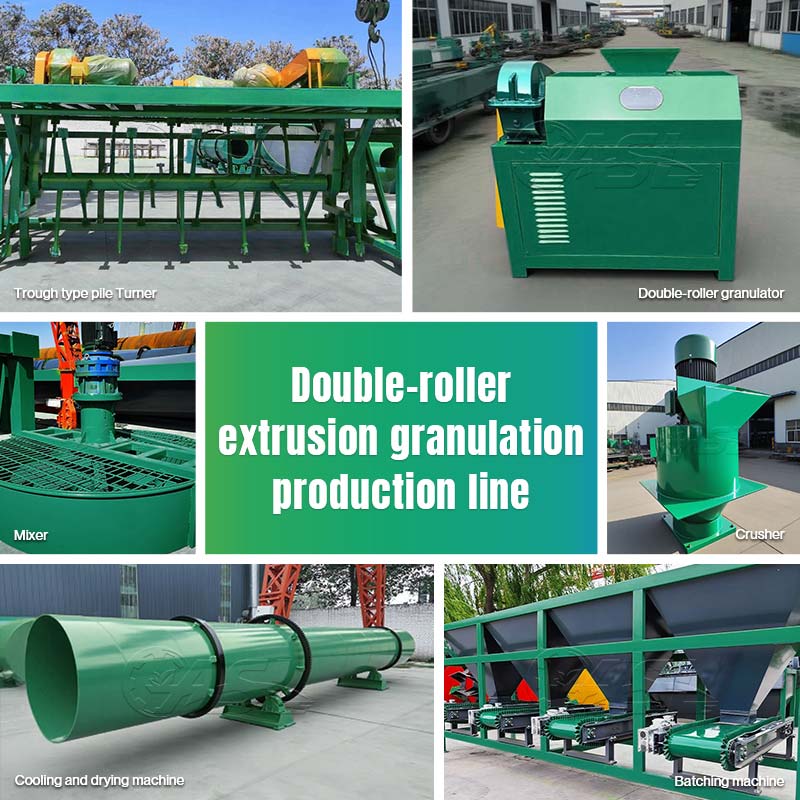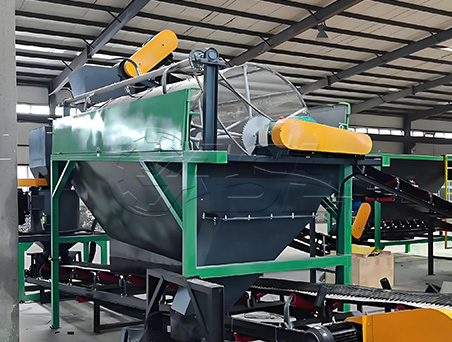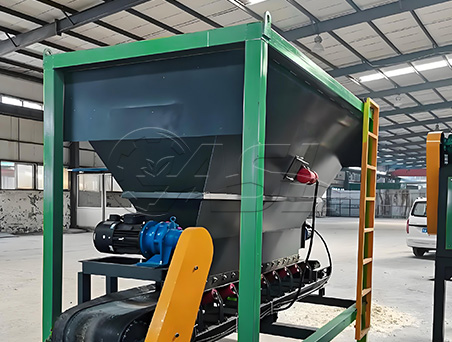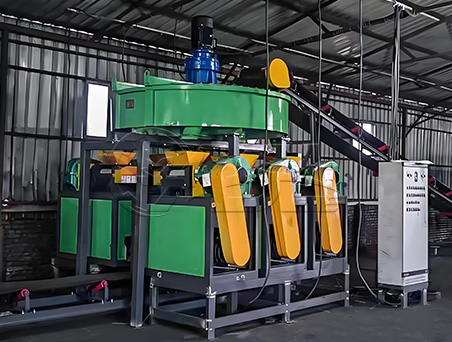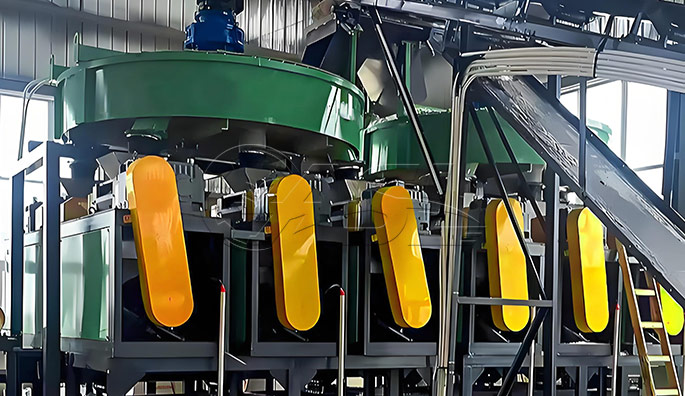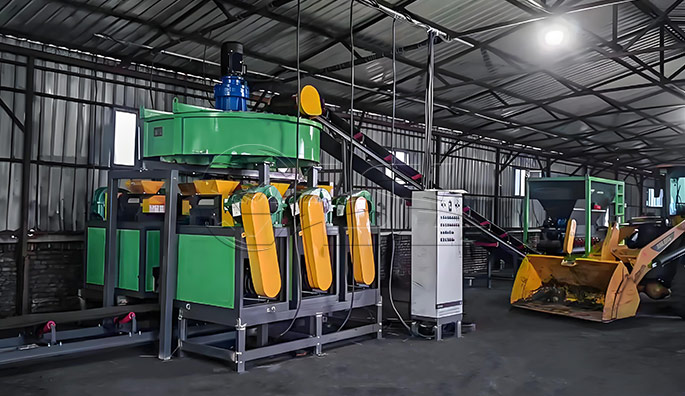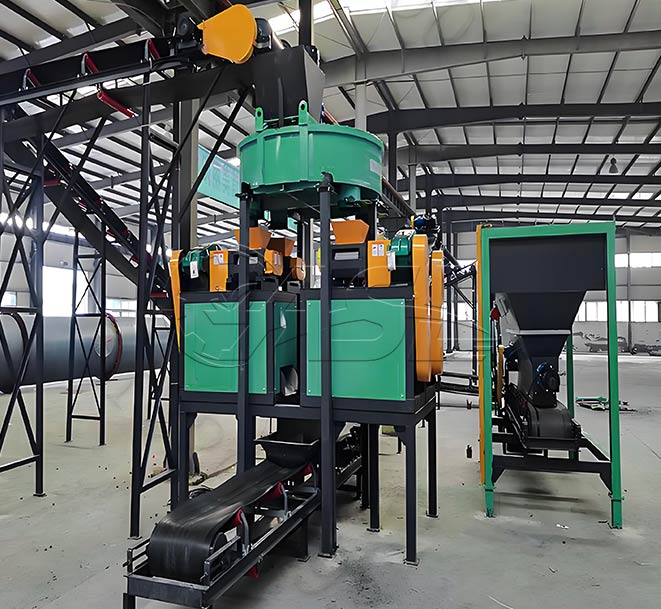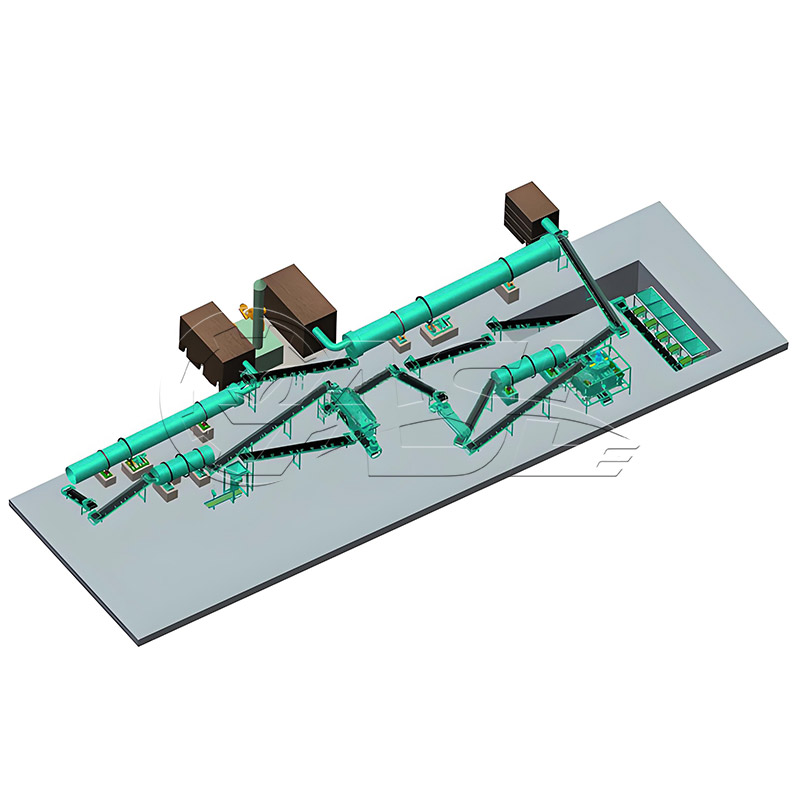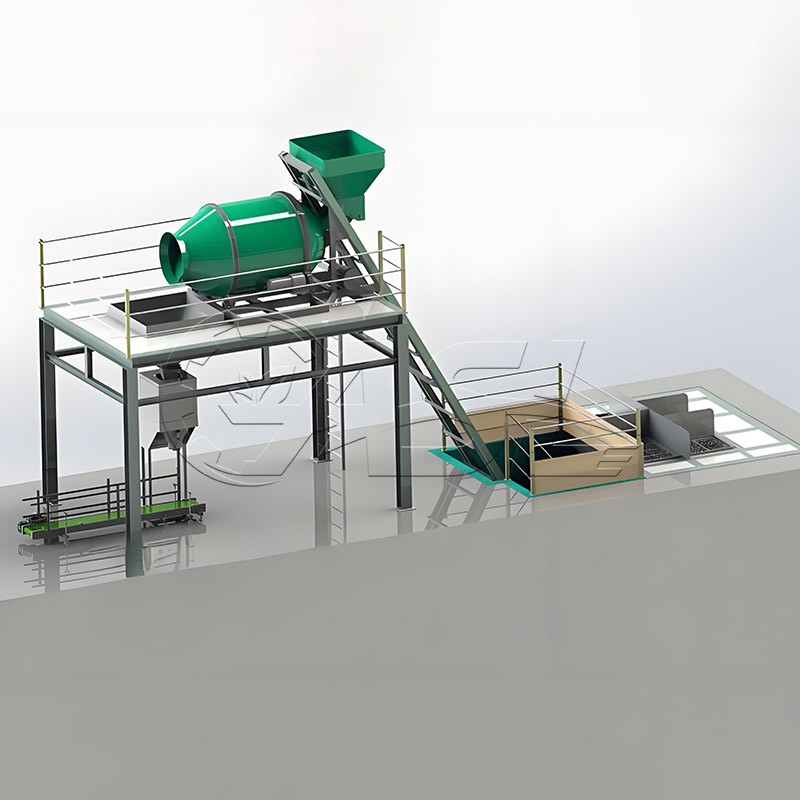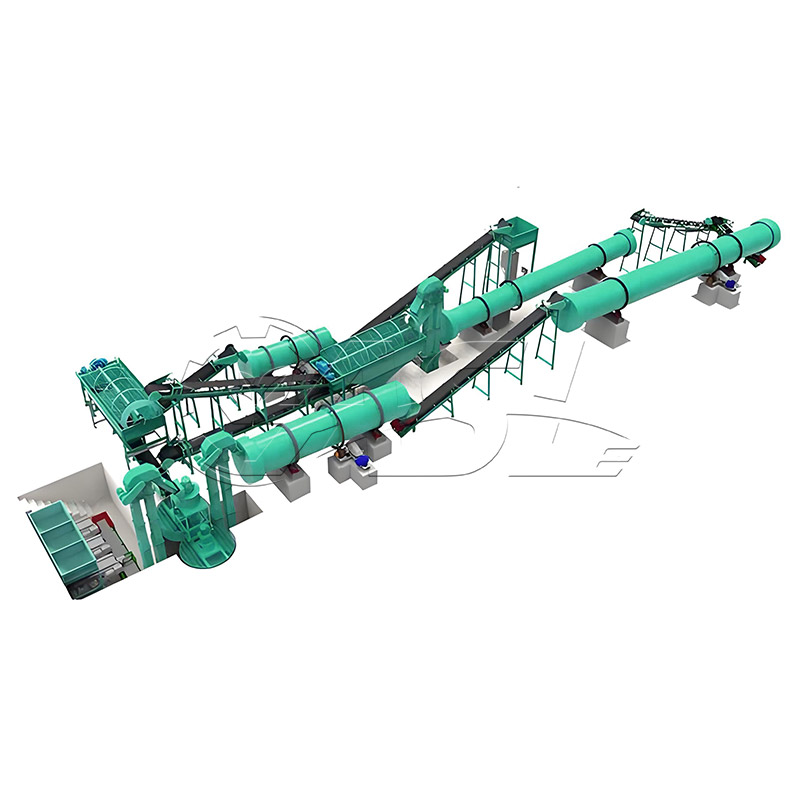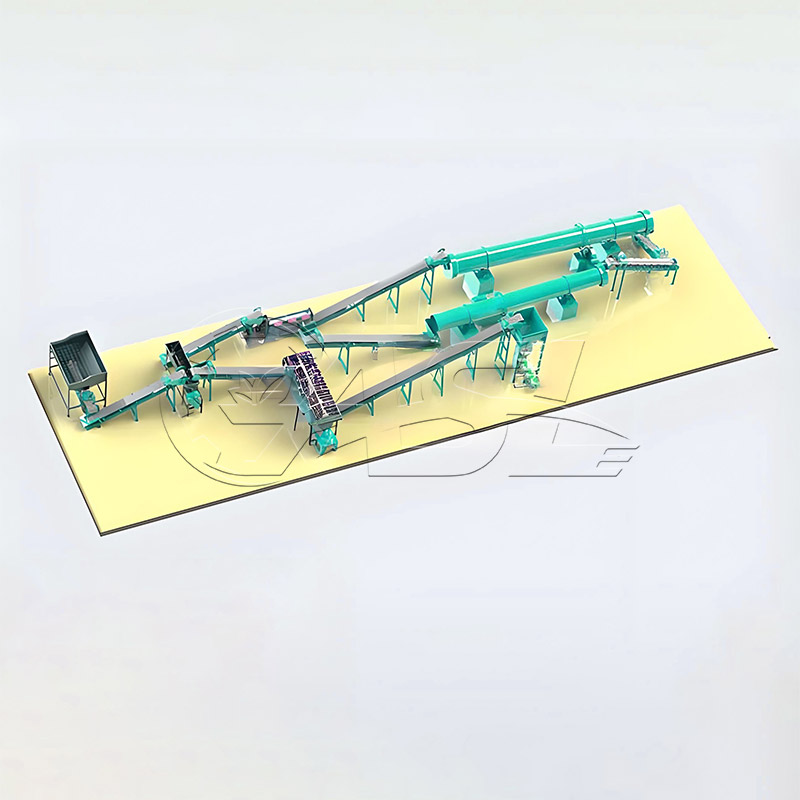What raw materials are suitable for processing on a double-roller granulation line? What is the required moisture content?
Double-roller granulation lines primarily offer dry granulation and are compatible with a wide range of raw materials, covering three core categories:
① Fertilizers: compound fertilizers, organic fertilizer powders, biofertilizers, and slow-release fertilizers;
② Chemicals: chemical powders such as ammonium chloride, potassium chloride, potassium sulfate, soda ash, and baking soda;
③ Minerals: mineral powders such as limestone powder, dolomite powder, and fluorite powder.
The moisture content of the raw materials must be strictly controlled between 8% and 15%. Too high a moisture content can easily cause sticking to the rollers and agglomeration, while too low a moisture content can increase fines and reduce the pelletizing rate.
What pelletizing rate can the line achieve? Does pellet strength meet industry standards?
With uniform raw material particle size and optimal extrusion parameters, the pelletizing rate of a double-roller granulation line can reach 92%-98%. The pellet strength is typically 15-30N, far exceeding national standards:
① Compound fertilizer: Pellet compressive strength ≥ 15N;
② Organic fertilizer: Pellet compressive strength ≥ 10N;
Even during long-distance transportation or stacked storage, the pellet breakage rate is kept below 3%.
Is it necessary to add a binder during production? What is the appropriate addition ratio?
Most raw materials do not require a binder; a small amount is only required in special cases:
① No binder required: Raw materials with a certain degree of viscosity, such as compound fertilizer, potassium chloride, and limestone powder, can be formed by extrusion pressure.
② No binder required: Organic dry powder and light mineral powder require a 0.5%-2% binder, primarily to prevent sticking to the rollers and improve pellet stability, thereby avoiding excessive costs.
Can the pellet size and shape of the production line be adjusted? What custom specifications are available?
Particle size and shape can be flexibly adjusted:
① Size Adjustment: This is achieved by replacing the screen mesh of the grading and screening machine. Conventional granules can be produced in the 2-8mm range (e.g., 2-4mm is common for compound fertilizers, and 3-5mm is common for organic fertilizers). Custom sizes of 1-2mm (for trace fertilizers) or 8-12mm (for slow-release fertilizers) can be customized for specific needs.
② Shape Adjustment: This is achieved by replacing the rollers of the double-roll extruder. The roller surface can be engraved with circular, square, strip, or oval grooves, with circular shapes being the most common (accounting for over 80%), facilitating subsequent packaging and fertilization.
